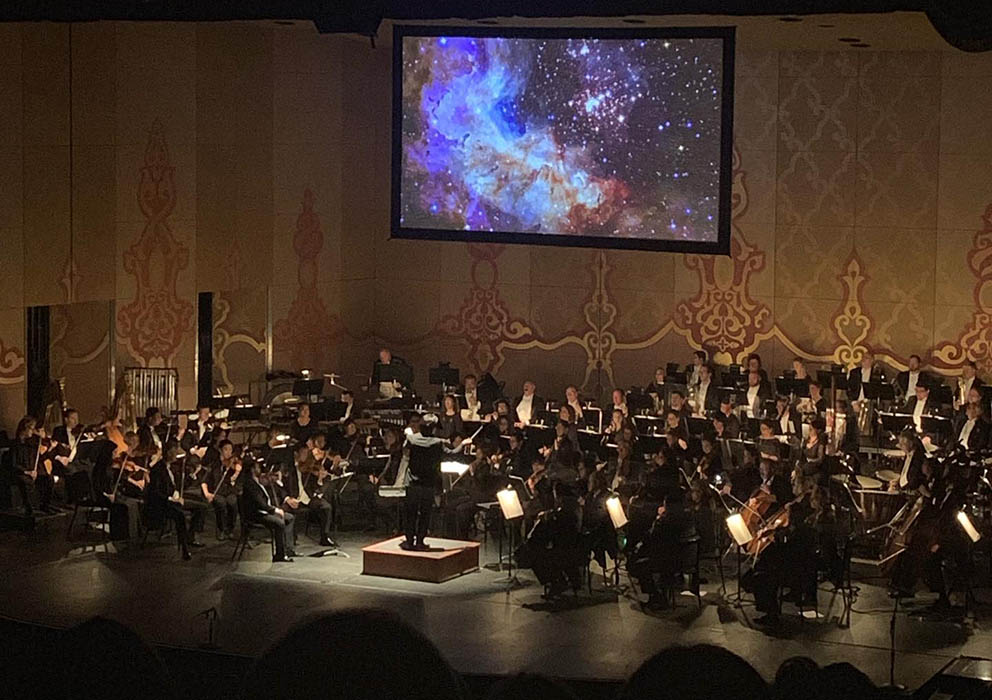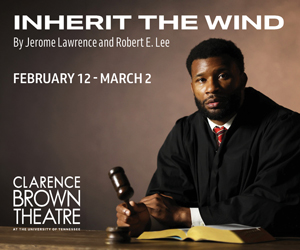In whatever way the musicians of the Knoxville Symphony Orchestra spent their summer—playing festivals, traveling, or just chilling—they arrived on the stage of the Tennessee Theatre last evening to begin the 2019-20 Masterworks season visibly energized and ready to take on a season bubbling over with challenges and opportunities. Understanding that a season-opener is a lot like the first day of school, KSO music director Aram Demirjian took the opportunity to energize the audience as well with an evening of intriguing orchestration, without demanding too much from them.
Drawing impetus from the recent 50th anniversary of the Apollo moon landing, Demirjian gave the evening a thematic arc that began on Earth and moved upward and outward through the solar system. Although it could easily have been otherwise, Demirjian and the orchestra took Johann Strauss’ On the Beautiful Blue Danube quite seriously as the season-opener, giving it the warmth and richness it needs, along with shimmering strings and gorgeous horns, as well as with the essential crispness of tight waltz-rhythm ensemble playing.
Contemporary composer Missy Mazzoli, currently the composer-in-residence with the Chicago Symphony Orchestra, is not exactly new to the KSO, but her work These Worlds in Us, which neatly followed the Strauss and soared, was a marvelous introduction for most in the KSO audience. Based on a poem by James Tate (“The Lost Pilot”), the work is fresh and addictively textural, whether from slippery, collapsing violin glissandos, the breath-like quality coming from melodicas, or the rhythmic intensity and display of percussive, clanky sounds.
Although Leopold Stokowski’s transcriptions or orchestrations of other composer’s works lost much of their interest for audiences in the late 20th and 21st centuries, they often serve a purpose for orchestras and their programming needs. Such was the case here, with Demirjian shooting for the moon with the Stokowski transcription of Debussy’s Clair de Lune—a gentle close to the first half of the concert.
Naturally, the big draw of the evening was Gustav Holst’s immensely popular The Planets, a work that celebrated the 100th anniversary of its premiere last year. This performance, though, was supplemented by impressive projected visuals and animations by artist Adrian Wyard taken from NASA images and his own creations. This, of course, raises the question: Do projected visuals add to—or distract from—the details and enjoyment of Holst’s captivating orchestrations? This reviewer definitely falls into the latter camp, especially when a performance is as enticing as this one.
Discussions of tempo always seem to arise with performances of The Planets, and this one was no different. With the opening movement “Mars”, Demirjian took a careful tempo through this popular movement that, it seemed, he was measuring against the content of the visuals.
“Venus” had a flirtatious feel and a more enticing tempo, begun by Principal horn Jeffery Whaley, followed by shimmering textures from harp, flute, and strings, then highlighted by an elegant violin solo from Concertmaster William Shaub. I was forced to close my eyes for “Mercury” in order to drink in Holst’s clever conversations between instruments.
By the time we reached “Jupiter”, tempos and textures were flowing with energy and zip, with the theme of that movement’s hymn beautifully solid and satisfying. “Saturn” and “Uranus” built to forceful conclusions, thanks to the KSO brass. “Neptune” was marked, too, by its lovely conclusion, the women’s voices of the Knoxville Choral Society, a feast of tone and dissonance, trailing off into the vast emptiness of space, until dying away completely.






